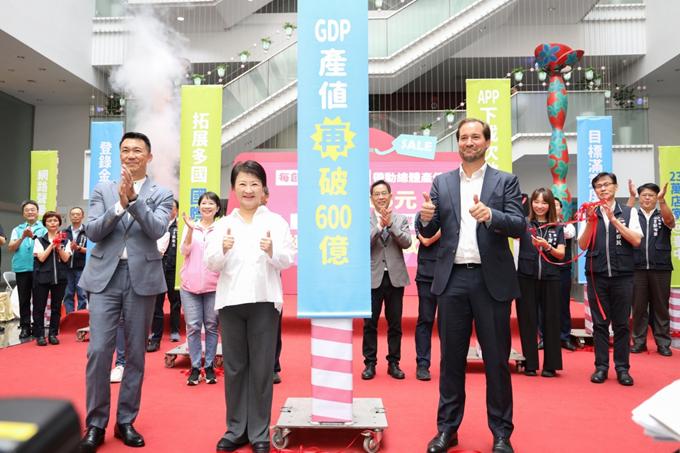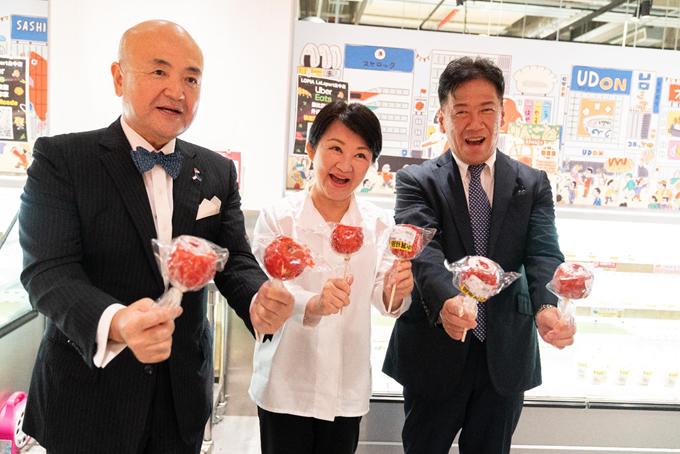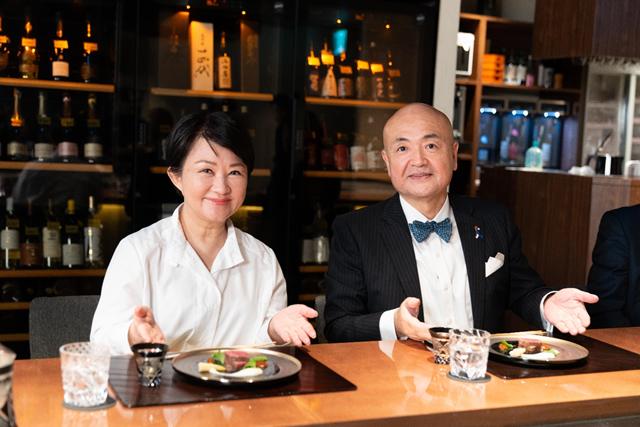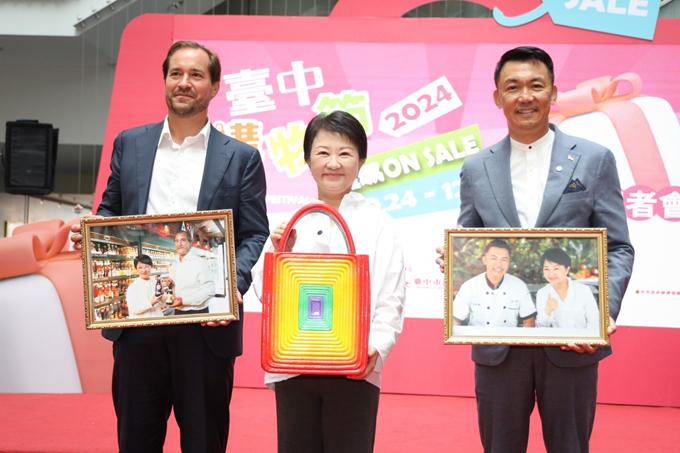The 2024 Taichung Shopping Festival had achieved outstanding results, generating a total registered spending amount of NT$35.3 billion. The Taichung Pass (TCPASS) app has surpassed 2.8 million downloads, with over 1.65 million registered members. The festival attracted international participation from over 40 countries, including Malaysia, Mainland China, Hong Kong, Vietnam, Japan, Indonesia, the United States, Andorra, Macau, and the Philippines, with a total of 2,784 foreign travelers registering their purchases, amounting to more than NT$43 million. This reflects Taichung’s appeal as a global city.
Foreign Traveler Participation and Spending Rankings

Photo: Economic Development Bureau, Taichung City Government
According to Taichung City Government's Economic Development Bureau (EDB) Director, Chang Feng-Yuan, the event app was integrated into the TCPASS in 2022 (the 4th edition), introducing data analytics features. Since 2024, nationality has been a mandatory field during registration. The statistics reveal that 2,784 foreign travelers participated this year, with the top three countries being:

Photo: Economic Development Bureau, Taichung City Government
1. Malaysia – 633 participants
2. Mainland China – 434 participants
3. Hong Kong – 403 participants

Photo: Economic Development Bureau, Taichung City Government
Other notable participant numbers include Vietnam (250), Japan (182), Indonesia (152), the United States (63), Andorra (59), Macau (54), and the Philippines (46).
In terms of registered spending, the top three nationalities were:

Photo: Economic Development Bureau, Taichung City Government
1. Mainland China – NT$11.51 million
2. Hong Kong – NT$8.96 million
3. Malaysia – NT$8.83 million
Other countries, including the United States, Japan, Vietnam, and Indonesia, also recorded over NT$1 million in spending.
Key Marketing Strategies for International Growth
Director Chang highlighted three major marketing strategies that contributed to the festival's success:
1. International Video Marketing:
Collaborated with representatives from Japan, Korea, and the United States in Taiwan to film promotional videos.
Each video garnered over 250,000 views online.
2. Expanded Global Promotion:
Widely disseminated festival-related content through international English-language media platforms.
Reached 47 countries, including Singapore, Australia, and New Zealand.
Promoted the festival to over 500 hotels across Asia.
3. Multilingual App Interface:
The event app now supports Chinese, English, Japanese, and Korean, making it easier for foreign visitors to participate.
Boosting Taichung's Tourism and Economy
According to Tourism Administration, Ministry of Transportation and Communications, during the festival period, Taichung saw an influx of foreign visitors, with the top three source regions being:
1. Hong Kong – 24,954 visitors
2. Vietnam – 9,900 visitors
3. South Korea – 9,618 visitors
This surge in international tourism has significantly contributed to Taichung’s local economy and tourism industry.
Future Plans: Strengthening Taichung's International Presence
The Economic Development Bureau expressed gratitude for the enthusiastic participation of travelers from over 40 countries. Moving forward, the Taichung City Government will continue to prioritize international marketing, enhance the festival’s global reach, and attract even more international visitors to experience the unique charm of Taichung.
Advertorial by Economic Development Bureau, Taichung City Government

WEAKER ACTIVITY: The sharpest deterioration was seen in the electronics and optical components sector, with the production index falling 13.2 points to 44.5 Taiwan’s manufacturing sector last month contracted for a second consecutive month, with the purchasing managers’ index (PMI) slipping to 48, reflecting ongoing caution over trade uncertainties, the Chung-Hua Institution for Economic Research (CIER, 中華經濟研究院) said yesterday. The decline reflects growing caution among companies amid uncertainty surrounding US tariffs, semiconductor duties and automotive import levies, and it is also likely linked to fading front-loading activity, CIER president Lien Hsien-ming (連賢明) said. “Some clients have started shifting orders to Southeast Asian countries where tariff regimes are already clear,” Lien told a news conference. Firms across the supply chain are also lowering stock levels to mitigate

IN THE AIR: While most companies said they were committed to North American operations, some added that production and costs would depend on the outcome of a US trade probe Leading local contract electronics makers Wistron Corp (緯創), Quanta Computer Inc (廣達), Inventec Corp (英業達) and Compal Electronics Inc (仁寶) are to maintain their North American expansion plans, despite Washington’s 20 percent tariff on Taiwanese goods. Wistron said it has long maintained a presence in the US, while distributing production across Taiwan, North America, Southeast Asia and Europe. The company is in talks with customers to align capacity with their site preferences, a company official told the Taipei Times by telephone on Friday. The company is still in talks with clients over who would bear the tariff costs, with the outcome pending further

Six Taiwanese companies, including contract chipmaker Taiwan Semiconductor Manufacturing Co (TSMC, 台積電), made the 2025 Fortune Global 500 list of the world’s largest firms by revenue. In a report published by New York-based Fortune magazine on Tuesday, Hon Hai Precision Industry Co (鴻海精密), also known as Foxconn Technology Group (富士康科技集團), ranked highest among Taiwanese firms, placing 28th with revenue of US$213.69 billion. Up 60 spots from last year, TSMC rose to No. 126 with US$90.16 billion in revenue, followed by Quanta Computer Inc (廣達) at 348th, Pegatron Corp (和碩) at 461st, CPC Corp, Taiwan (台灣中油) at 494th and Wistron Corp (緯創) at

NEGOTIATIONS: Semiconductors play an outsized role in Taiwan’s industrial and economic development and are a major driver of the Taiwan-US trade imbalance With US President Donald Trump threatening to impose tariffs on semiconductors, Taiwan is expected to face a significant challenge, as information and communications technology (ICT) products account for more than 70 percent of its exports to the US, Chung-Hua Institution for Economic Research (CIER, 中華經濟研究院) president Lien Hsien-ming (連賢明) said on Friday. Compared with other countries, semiconductors play a disproportionately large role in Taiwan’s industrial and economic development, Lien said. As the sixth-largest contributor to the US trade deficit, Taiwan recorded a US$73.9 billion trade surplus with the US last year — up from US$47.8 billion in 2023 — driven by strong